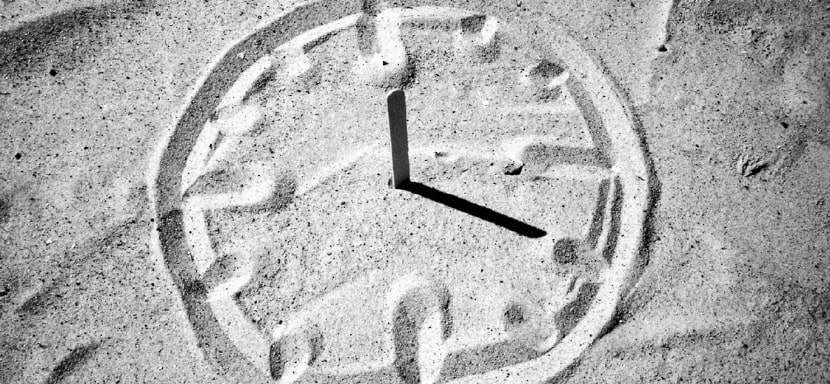How to Use the Sun to Tell Time

Using the sun to tell time sounds like a Robinson Crusoe novel. Imagine being stranded on a desert island with no phone, clock, or sundial. You’d still have one incredibly reliable resource: the sun. It’s been doing its thing for billions of years, and by the looks of it, it’ll keep at it.
So, if you want to get in touch with your inner survivalist (or impress your friends on a camping trip), this article will teach you how to read the time using nothing but that fiery ball in the sky. And no, you don’t need a PhD in astronomy to pull it off.
Key Points
- Shadow Length: Shorter shadows mean midday; longer shadows indicate afternoon.
- Solar Noon: The sun at its peak marks noon.
- Seasonal Adjustments: The sun’s path changes with the seasons, altering shadow length.
Why Should You Learn How to Use the Sun to Tell Time?
There’s something satisfying about knowing how to tell time without depending on your watch or phone. It connects you to the earth’s rhythms. Plus, it’s a neat party trick—who wouldn’t be impressed if you glance at the sky, squint, and confidently say, “Ah, it’s about 3 PM”?
Not only is it handy for outdoor adventures, but learning how to use the sun to tell time can also make you more mindful of nature. We’ve grown so accustomed to modern conveniences that we often forget the simple ways people once lived—like figuring out the time by simply looking up.
The Basics: How the Sun’s Position Tells Time
The sun rises in the east, peaks in the south (if you’re in the Northern Hemisphere), and sets in the west. This regular pattern gives us the perfect tool for estimating time. Before clocks and fancy technology, civilizations depended on this daily journey. You can, too, if you understand a fewfundamentaly principles.
Morning Hours: The Sun Rises in the East
At dawn, when the sun peeks over the horizon in the east, it’s roughly 6 AM. However, the exact time of sunrise depends on the season and your location. In winter, for instance, the sun might rise as late as 8 AM, while in the summer, it could be up by 5 AM. Still, as a general rule, you can consider the early hours as morning whenever the sun is in the east.
Midday: Solar Noon
When the sun reaches its highest point in the sky, it’s solar noon. This doesn’t always align with noon on your clock because time zones and Daylight Saving Time mess with nature’s schedule. But at solar noon, the sun is directly overhead (or as close as it’ll get), casting the shortest shadow of the day.
Afternoon: The Westward Journey
As the day progresses, the sun begins to descend, moving westward. By the time it’s closer to the horizon, you know you’re nearing the late afternoon or early evening. Depending on how high the sun is in the sky, you can estimate whether it’s 3 PM or 5 PM.
Did You Know?
Did you know that ancient Egyptians used a “merkhet,” one of the earliest known timekeeping tools, which relied on the alignment of stars and the sun’s shadow to tell time at night and day accurately?
Your Shadow: A Natural Timepiece
When was the last time you noticed your shadow? It turns out it’s not just for playing Peter Pan or seeing if groundhogs predict the weather. Your shadow is one of the best tools for telling time using the sun.
Shorter Shadows Mean It’s Around Midday
As the sun rises higher in the sky, your shadow shortens. When your shadow is at its shortest, it’s probably around noon. You can then use the lengthening of your shadow as the afternoon progresses to estimate the time.
How to Use Your Hand to Gauge Time
Here’s a trick you’ll love: hold your hand up to the horizon with your fingers spread out. Count the number of fingers between the horizon and the sun. Each finger-width represents about 15 minutes. So, if you can fit four fingers between the sun and the horizon, you’ve got about an hour until sunset.
Using a Stick to Create a Makeshift Sundial
Grab a stick and create your sundial if you’re feeling a bit more adventurous. This method requires a little patience, but it’s incredibly accurate.
Step-by-Step Guide to Making a Stick Sundial
- Find a straight stick (around 2-3 feet long works best).
- Place it upright in the ground, where it’ll get direct sunlight.
- Every hour, mark the end of the shadow cast by the stick. After a few hours, you’ll see a pattern of the sun’s movement.
- Connect the marks to create a rough guide for time as the shadow moves throughout the day.
While this method won’t give you the minute-by-minute precision of your smartphone, it’s a reliable way to estimate the time, especially if you’re in a pinch.
Seasonal Changes: How the Sun’s Path Varies by Month
One thing to remember when telling time by the sun is that it doesn’t always behave the same way. During the winter, the sun’s arc is lower in the sky, which means shorter days and longer shadows. In summer, the sun takes a higher path, leading to longer days and shorter shadows around midday.
How to Adjust for Different Seasons
- Summer: Expect earlier sunrises and later sunsets. Noon shadows will be pretty short.
- Winter: Late sunrises and early sunsets mean shadows stay longer throughout the day.
To adapt your solar time-reading skills to different seasons, remember the sun’s position will be higher in summer and lower in winter.
Why Understanding Solar Time Is Still Relevant Today
You might be wondering: with all our technology at our fingertips, why bother learning how to use the sun to tell time? Here’s why: technology fails. Phones run out of battery. Watches break. But the sun? It’s always there (unless it’s cloudy…but that’s a different issue).
Telling time by the sun also keeps you in sync with nature, fostering a deeper understanding of your environment. This skill ties us to our ancestors, who navigated their days using nothing more than the natural world around them.
Common Challenges When Using the Sun to Tell Time
Of course, nothing’s perfect, and the sun isn’t always the easiest timekeeper to rely on. Clouds, mountains, and trees can all obscure your view, making judging the sun’s position trickier. If you’re in a place with tall buildings or heavy forest cover, you might have to be creative and find a clearing to see the sky.
How Accurate Is Solar Time Compared to a Clock?
While using the sun to tell time won’t be as precise as checking your phone, it’s surprisingly accurate if you practice. Expect to be off by about 15-30 minutes, depending on your method. But let’s be honest—if you’re relying on the sun for time, you’re probably not too worried about catching the bus at exactly 2:47 PM.
FAQs
How can I use the sun to tell time without any tools?
You can use the position of the sun and the length of your shadow to estimate the time. When the sun is directly overhead, and your shadow is the shortest, it’s around noon. As the shadow lengthens, you can tell it’s later in the day.
What is solar noon?
Solar noon is when the sun reaches its highest point in the sky. This usually occurs around noon but can vary depending on your time zone and location.
How accurate is telling time using the sun?
While not as accurate as modern clocks, telling time by the sun can get you within 15-30 minutes of the actual time, depending on the method you use.
Can I use my hand to tell time by the sun?
Yes! By holding your hand horizontally with your fingers spread, you can count how many fingers fit between the horizon and the sun. Each finger represents about 15 minutes until sunset.
Does the sun’s path change throughout the year?
Yes, the sun’s path is higher in the sky during summer and lower during winter, affecting the day’s length and the shadows cast at noon.
Is there a way to make a simple sundial?
Absolutely! Stick a straight object into the ground and mark where its shadow falls every hour. Over time, you’ll create a rough guide for reading solar time.
Conclusion: How to Use the Sun to Tell Time
So, look up the next time you find yourself without a clock. The sun is the world’s oldest and most reliable timepiece.
Whether exploring the great outdoors or just showing off your new skills at a backyard BBQ, learning how to use the sun to tell time connects you with the natural world in a way few modern technologies can.
It’s not just about knowing what hour it is—it’s about tuning in to something bigger, something timeless.
Historical Facts About Telling Time Using the Sun
Telling time with the sun has been an essential skill across many civilizations. It helped people track the passing hours, seasons, and even significant events long before mechanical clocks were invented. Various cultures devised ingenious methods to use the sun’s position and shadows to estimate time, shaping early timekeeping systems still referenced today.
Here are some fascinating examples:
- Ancient Egyptian Sundials: Around 1500 BCE, Egyptians were among the first to use simple sundials, measuring time-based on the sun’s shadow cast on a flat surface.
- Babylonian Obelisks: These towering structures acted as massive shadow-casters, allowing Babylonians to divide the day into distinct periods by tracking the sun’s movement.
- Greek Water Clocks: Greeks combined solar time with water clocks, using them when the sun wasn’t visible, to measure time in courtrooms and public spaces.
- Roman Portable Sundials: Romans developed small, portable sundials, making solar timekeeping more accessible for travelers and soldiers during their expansive conquests.
- Chinese Shadow Clocks: By 800 BCE, Chinese astronomers used shadow clocks (early sundials) to determine the time of day and the changing seasons, enhancing their agricultural planning.
- Islamic Sundials: In the medieval Islamic world, sundials were used to tell time and determine prayer times, incorporating religious and scientific knowledge.
- Medieval European Church Sundials: Many churches in medieval Europe featured sundials on their walls, helping townsfolk follow the daily schedule of prayers and religious activities.
- Mayan Sun Calendars: The ancient Maya civilization used the movement of the sun and the shadows it cast to structure their elaborate calendar systems, predicting both agricultural cycles and religious events.
- Incan Intihuatana Stones: Incan priests used these carved stones to observe the sun’s shadow during the solstices, believed to tie the sun to the earth and control its course.
- Viking Sunstones: Vikings are believed to have used unique crystals called sunstones to find the sun’s position on cloudy days, navigating their ships across vast distances.
More Survival Tips
How to Build an Emergency Kit
Emergencies don’t knock politely at the door. They barge in, uninvited, like a distant relative with a…
How to Protect Yourself From Insects in the Wild
There’s nothing like being out in the wild—birdsong echoing through the trees, the fresh scent of…
How to Identify Poisonous Plants
Exploring the great outdoors can be refreshing, but it comes with its fair share of risks. Chief among…
How to Purify Water Using Boiling
When you’re miles away from civilization, lost in the wilderness, or simply don’t trust what’s coming out…
How to Build a Faraday Cage
Ever had one of those moments where your phone seems to be on its own personal field trip in a world of…
Recent Survival Posts
How to Survive a Layoff
Layoffs feel personal—even when they’re not. One day, you’re responding to Slack messages and forwarding…
How to Survive a Drug Test
I never imagined I’d be so emotionally invested in a paper cup. But there I was, standing under the fluorescent…
How to Survive an Interrogation
If you’ve ever been caught in the crosshairs of an overly enthusiastic mall cop or stared down by someone…
How to Survive a Nightclub Shooting
Nightclubs pulse with life—lights flashing, music pounding, bodies packed tight on the dance floor. It’s a place to…
How to Survive a Bachelor Party
A bachelor party is a delicate mix of celebration, chaos, and questionable decision-making, wrapped…
More Survival Tips and Advice

How to Protect Yourself From Insects in the Wild
There’s nothing like being out in the wild—birdsong echoing through the trees, the fresh scent of earth, and a deep sense of peace that makes you think, “Ah, this is what life is about.” But then comes the buzzing. Mosquitoes, ticks, and flies swoop in like uninvited...

How to Identify Poisonous Plants
Exploring the great outdoors can be incredibly refreshing, offering a chance to reconnect with nature and unwind from daily stresses. However, it also comes with its fair share of risks. Chief among them? Poisonous plants. These hidden hazards can turn a peaceful...

How to Purify Water Using Boiling
When you're miles away from civilization, lost in the wilderness, or don't trust what's coming out of your tap, the idea of pure, clean drinking water starts to sound like a mythical oasis. Maybe it's all those survival shows you've binged, but suddenly, you're eyeing...

How to Build a Faraday Cage
Have you ever had one of those moments when your phone seems to be on its own personal field trip through Wi-Fi signals, Bluetooth, and all kinds of electromagnetic noise? Well, I have. The endless hum of invisible waves flying through the air makes you wonder—how can...

How to Make a Torch for Light
Creating your torch for light is not only a practical skill but also a rewarding craft. Whether preparing for a camping trip, looking for a unique DIY project, or wanting a reliable light source for emergencies, making a torch can be an enjoyable and valuable...
More Survival Scenarios

How to Survive a Layoff
When the Floor Falls Out: The Reality of a Layoff Layoffs feel personal—even when they're not. One day, you're responding to Slack messages and forwarding emails. Next, you're staring at your monitor as it logs you out... for good. Whether it's a restructuring, a...

How to Survive a Drug Test
The Cup, The Room, The Truth I never imagined I’d be so emotionally invested in a paper cup. But there I was, standing under the fluorescent hum of a strip-mall clinic, trying to recall the last time I ate a poppy seed bagel. That’s the thing about drug tests—they...

How to Survive an Interrogation
If you've ever been caught in the crosshairs of an overly enthusiastic mall cop or stared down by someone in a uniform with a clipboard and a glare, you’ve felt it — the chilly fingers of interrogation anxiety. And while most of us imagine interrogation scenes as...

How to Survive a Nightclub Shooting
Nightclubs pulse with life—lights flashing, music pounding, bodies packed tight on the dance floor. It’s a place to escape, feel the rhythm, and lose yourself in the crowd. But that same energy can turn deadly in seconds, transforming a night of fun into one of the...

How to Survive a Bachelor Party
A bachelor party is a delicate mix of celebration, chaos, and questionable decision-making, wrapped in the noble intention of sending the groom off into married life with a night he’ll (hopefully) remember. It’s a ritual as old as time—well, as old as men deciding...

How to Survive Your First Time at the Gym
Walking into a gym for the first time can feel like stepping into an alien world. The machines hum with purpose, the regulars move confidently, and you’re left standing there, clutching your water bottle, wondering whether you’re in the right place—or on the right...

How to Survive a Worldwide Communications Breakdown
Imagine waking up to silence. Your phone doesn’t buzz, your email won’t load, and even your local radio station crackles with static. A worldwide communications breakdown has hit. What next? For many, this doomsday scenario may sound like the opening lines of a...

How to Survive a Flash Flood While Driving
Surviving a flash flood while driving requires quick thinking, calmness, and a solid plan to ensure your safety. Preparation can make all the difference between a close call and a catastrophe in emergencies like this. This guide provides practical advice to protect...

How to Build an Emergency Kit
Emergencies don’t knock politely at the door. They barge in, uninvited, like a distant relative with a penchant for drama, turning your world upside down without warning. Whether it’s a power outage, a natural disaster, or an unexpected evacuation, the key to staying...

How to Protect Yourself From Insects in the Wild
There’s nothing like being out in the wild—birdsong echoing through the trees, the fresh scent of earth, and a deep sense of peace that makes you think, “Ah, this is what life is about.” But then comes the buzzing. Mosquitoes, ticks, and flies swoop in like uninvited...
